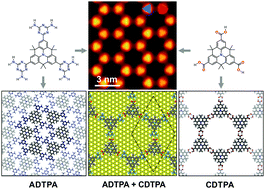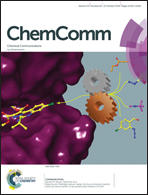Binary supramolecular networks of bridged triphenylamines with different substituents and identical scaffolds†
Abstract
Based on scanning tunneling microscopy experiments combined with density functional theory, we report the formation and the electronic structure of porous binary supramolecular networks on Au(111). The two triphenylamine derivatives with identical scaffolds intermix due to a maximization of the overall number of H-bonds instead of an optimization of the H-bond strength in the bonding motif. The HOMO–LUMO gap is defined by both molecules, which is typical for electron donor–acceptor networks.

- This article is part of the themed collection: Scanning probe frontiers in molecular 2D-architecture world


 Please wait while we load your content...
Please wait while we load your content...